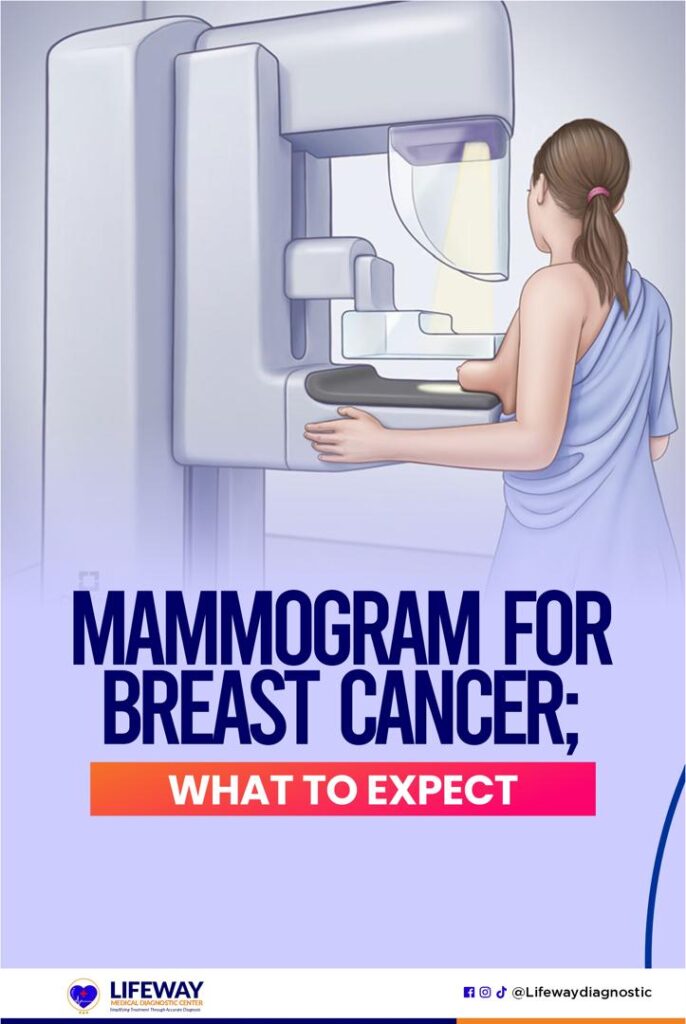Breast cancer is a significant health concern, and regular mammograms play a vital role in early detection.

In this blog post, we’ll guide you through the mammogram process.
We will help you understand what to expect and how to make the experience as smooth and stress-free as possible.
From the scheduling of your appointment to the actual procedure and the interpretation of your results, we’ll provide you with the information you need to feel empowered and informed throughout the process.
Read: 11 Ways to Keep Your Heart Healthy
What Is A Mammogram?
A mammogram is a type of X-ray specifically designed to detect breast cancer in its early stages.
It involves compressing the breast between two plates to get clear images of the breast tissue.
Mammograms are recommended for women starting at age 40 or earlier if there is a family history of breast cancer.
The procedure may be slightly uncomfortable for some women, but it is an essential tool in early detection and can save lives by identifying potential issues before they become more serious.
Women need to prioritize their breast health and schedule regular mammograms as recommended by their healthcare provider.
Why Is A Mammogram Important?
A mammogram can help detect abnormalities in the breast tissue that may not be noticeable through physical exams, allowing for early intervention and improved outcomes.
Regular mammograms are recommended for women over the age of 40, or earlier if there is a family history of breast cancer.
In addition to detecting breast cancer early, mammograms can also help reduce the risk of mortality from the disease by identifying tumors before they have a chance to spread.
Read: What Causes Shortness of Breath?
What Are The Different Types Of Mammograms?
The different types of mammograms include:
1. 2D Digital Mammogram:
This is the most common type of mammogram.
It uses low-dose X-rays to create detailed two-dimensional images of the breast tissue, allowing radiologists to identify any abnormalities or changes.
2. 3D Mammography (Tomosynthesis):
This advanced technique takes multiple X-ray images of the breast from different angles, creating a three-dimensional view.
This can help provide a more comprehensive assessment, especially for women with dense breast tissue.
3. Automated Breast Ultrasound (ABUS):
This specialized mammogram is designed for women with dense breast tissue, where traditional mammograms may have difficulty detecting potential issues.
ABUS uses sound waves to create detailed images of the breast, providing additional information to complement the mammogram.
4. Breast MRI:
Magnetic Resonance Imaging (MRI) can be used as a supplementary screening tool, particularly for women at high risk of breast cancer.
Breast MRI provides detailed, three-dimensional images of the breast tissue, which can help identify small tumors or other abnormalities that may not be visible on a mammogram.
Also Read: How To Perform CPR (Cardiopulmonary Resuscitation)
At What Age Should I Start Getting Mammograms?
It is generally recommended that women start getting mammograms at the age of 40, as this is when the risk of developing breast cancer begins to increase.
However, it’s important to consult with your healthcare provider to determine the best age to start based on your risk factors and family history.
Some women may need to start screening earlier if they have a family history of breast cancer or other risk factors.
Regular mammograms can help detect breast cancer early, which can greatly improve treatment outcomes.
Also Read: Cucumber: Nutritional Content and Health Benefits
Is A Mammogram Painful?
Having a mammogram can be uncomfortable for some women, but it is typically not painful.
The procedure involves compressing the breast between two plates to get a clear image, which can feel like pressure or squeezing.
It only lasts for a few seconds and is necessary for detecting any abnormalities in the breast tissue.
It’s important to remember that the discomfort experienced during a mammogram is temporary and important for early detection of breast cancer.
Many women find that the brief discomfort is well worth the peace of mind that comes from knowing their breast health status.
Remember to communicate with the technician performing the mammogram if you are feeling particularly sensitive or anxious, as they can make adjustments to ensure your comfort during the procedure.
How Long Does A Mammogram Take?
A mammogram typically takes around 20-30 minutes to complete.
The actual imaging process itself only lasts a few seconds per image, but the entire appointment includes time for registration, changing into a gown, and positioning for the scans.
It’s important to arrive a little early for your appointment to allow time for paperwork and any necessary preparations.
The procedure itself is quick and relatively painless, with slight discomfort from the compression of the breasts being the most common sensation reported by patients.
Related: Diabetes: Types, Diagnosis, and Prevention
How Do I Prepare For My Mammogram Appointment?
Preparing for your mammogram appointment is important to ensure a smooth and comfortable experience.
Firstly, make sure to wear a two-piece outfit as you will need to undress from the waist up for the exam.
Avoid using deodorant, lotion, or powder on your chest area as these products can interfere with the imaging process.
It’s also helpful to review any previous mammogram results and inform the technician of any changes or concerns you may have. Stay relaxed and take deep breaths during the procedure to help minimize discomfort.
What Should I Expect During A Mammogram?
When it comes to getting a mammogram, it’s natural to have questions and concerns about what to expect during the procedure. Here are some key things you should be prepared for:
1. Breast Positioning: The technician will carefully position your breast on the mammogram machine’s platform and gently compress it between two plates. This compression helps spread out the breast tissue, allowing for clearer images.
2. Discomfort: You may experience some discomfort or even mild pain during the breast compression.
This is normal and typically lasts only a few seconds. Communicating any discomfort to the technician can help them adjust the compression as needed.
3. Multiple Views: The technician will typically take several images of each breast from different angles to ensure a comprehensive evaluation. This may involve repositioning your breast between each image.
4. Waiting for Results: After the mammogram, you’ll need to wait for the radiologist to review the images and provide your healthcare provider with the results. This process can take a few days to a week, depending on the facility.
5. Potential Follow-Up: If the radiologist identifies any areas of concern, you may be asked to undergo additional testing, such as a diagnostic mammogram, ultrasound, or biopsy. This is not uncommon and does not necessarily mean you have breast cancer.
What Can Show Up On A Mammogram Result? Normal Or Abnormal
On a mammogram result, you can expect to see a variety of findings, ranging from normal to abnormal.
A normal result typically shows no signs of any concerning issues, providing reassurance about the health of your breasts.
On the other hand, an abnormal result may indicate the presence of abnormalities such as cysts, calcifications, or tumors that require further evaluation.
It’s important to remember that not all abnormalities detected on a mammogram are cancerous, and further tests may be needed to determine the exact nature of the finding.
Regular mammograms are important for early detection and treatment of breast cancer, so it’s always best to follow up with your healthcare provider if you receive an abnormal result. Remember, early detection saves lives!
Frequently Asked Questions
Most patients receive their mammogram results within a few days to a week after the exam.
Your healthcare provider will discuss the results with you and any follow-up steps if necessary.
Mammograms involve exposure to low levels of radiation, but the benefits of early detection far outweigh this minimal risk.
Be sure to inform your technologist if you are pregnant or have breast implants.
In many cases, women can self-refer for routine screening mammograms without needing a referral from their primary care physician.
Check with your local imaging center for more information on scheduling options.
Conclusion
Getting a mammogram for breast cancer is an important step in taking care of your health.
By knowing what to expect during the procedure, you can get over any fears or concerns you may have.
Remember that early detection is key in successfully treating breast cancer, so don’t hesitate to schedule your mammogram when recommended by your healthcare provider.
Recommendations
- EEG (Electroencephalogram); All You Need To Know
- Where to get a CT Scan near me
- Spirometry: Understanding and Preparation
- Why Choose Lifeway Medical Diagnostic Center?
- Lifeway Diagnostic Ambulance Service
References
- my.clevelandclinic.org– Mammogram
